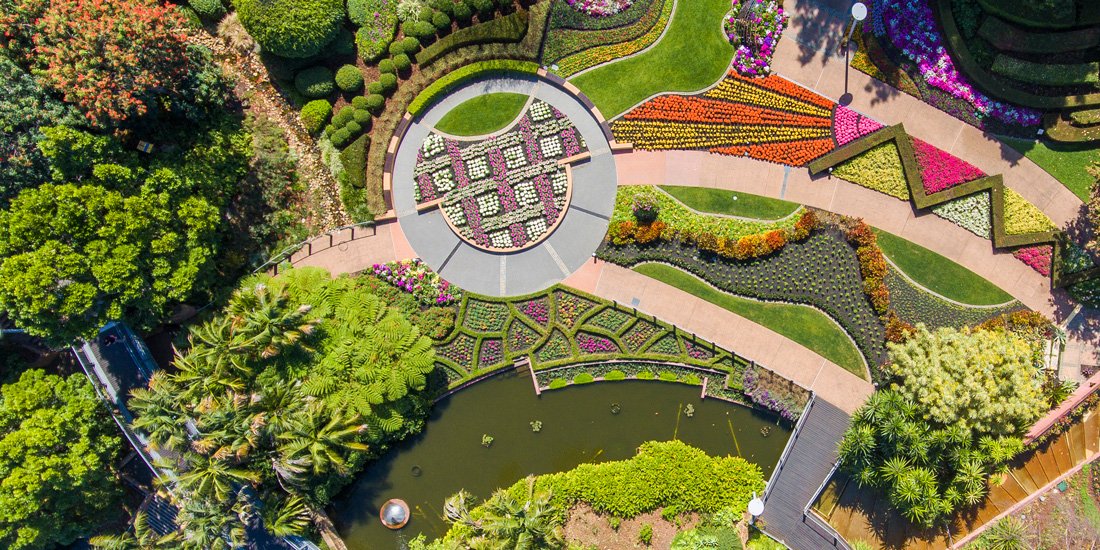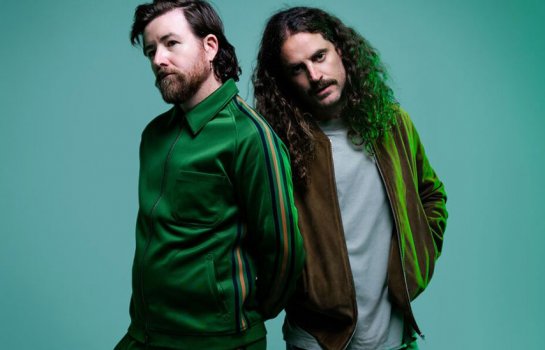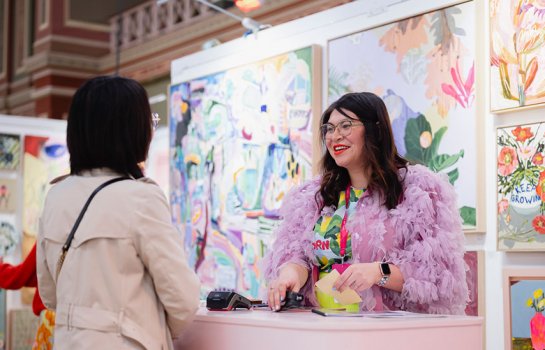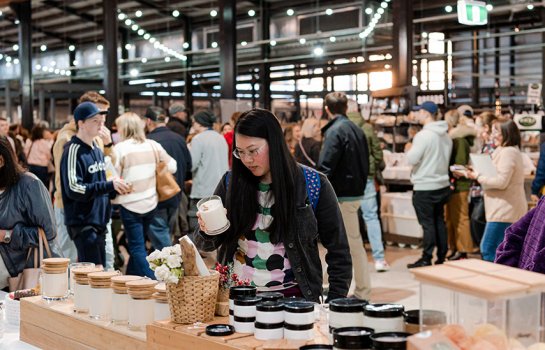
Ancient animals and funky flora – five weird and wonderful reasons to visit Roma Street Parkland
Spring has sprung and the best place to take advantage of warmer weather, beautiful blooms and the season’s huge calendar of events is none other than Brisbane’s sub-tropical oasis, Roma Street Parkland. Nestled in the heart of Brisbane City, Roma Street Parkland has been offering botanical delights, rolling green hills, perfect picnic spots and so much more for nearly 20 years. You may think you’ve seen it all, but we have discovered some interesting (and a little bit quirky) facts that you probably didn’t know about this iconic Brisbane landmark. Be on the lookout the next time you visit!
Roma Street Parkland is the biggest urban sub-tropical garden in the world: A short ten-minute stroll from inner-city Brisbane is where you’ll find Roma Street Parkland, full of lush designer gardens and sprawling lawns that wind around 160,000 sqm of green parklands (as big as nearly 30 football fields!) – making it the biggest urban sub-tropical garden on Earth. While it’s extremely popular with garden enthusiasts for its beautiful blooms, Roma Street Parkland is for everything to enjoy and take advantage of the gardens’ barbecue facilities, playgrounds and events like Blooms & Tunes – an afternoon of music and picnic goodness happening every weekend during September.
There are 1800 different varieties of plants within the spring display: Looking for something to do around Brisbane City? With more than 15,000 annuals blooming in a breathtaking showcase of colour, Roma Street Parkland’s Spectacle Garden in Colin Campbell Place is a floral-filled display of elegance that is not to be missed. The Spectacle Garden is made up of beautiful garden heroes such as pansies, snapdragons and old-English favourites like delphiniums and foxgloves, as well as contemporary additions including kalanchoe and ornamental kale. After you’ve checked out the spectacular flower showcase, wander through the curling garden path (which mimics the flow of the Brisbane River) and check out the croton hedge with contrasting red and yellow colouring, which is a stylised interpretation of the Aboriginal Rainbow Serpent. For more information on The Spectacle Garden, head here.
Roma Street Parkland provides a haven for wildlife: The different areas of Roma Street Parkland create microclimatic zones, which make it attractive to a range of animals, particularly birds like kookaburras, brush turkeys, lorikeets, galahs and tawny frogmouths. The parkland lake is also home a few different aquatic species, among them being the lungfish – a fish species that has both gills and lungs, which lets them survive out of water for up to several days. This slimy species can also live to be 100 years old and are considered the oldest living vertebrate on the planet – how cool is that? If that’s not enough animal action, Roma Street Parkland is home to more than 600 eastern water dragons. These reptiles tend to hang around the Spectacle Garden – though you can catch them soaking in the sun just about anywhere throughout the park!
The gardens are home to several types of bees: Roma Street Parkland is also home to a number of different crazy critters, so you’re likely to see a bunch of bees and butterflies buzzing around. There are three main types of bees in Australia – the European honey, Australian native and solitary bees – all of which can be found hanging around the botanical beauties in the Spectacle Garden. The Parkland’s honeybees and native hives are managed by qualified apiarists and, when harvested, produce an average of 150 kg of honey per year!
The gardens contain a particularly smelly flower: The most unusual plant at Roma Street Parkland is undoubtedly the Amorphophallus Paeoniifolius, otherwise known as the elephant yam. Native to tropical Queensland, Northern Territory, New Guinea and India, these flowers are known for smelling like rotting flesh, which attracts lots of flies when they’re in bloom. The flower emerges in late spring and (thankfully for our noses) lasts for only two weeks, so if you want to check out this stinky sucker for yourself, you have to be quick!
To find out more about what’s on in Brisbane, head to our Event Guide.




